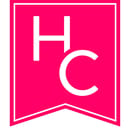In the final weeks of the year 1963, following the assassination and burial of then President John F. Kennedy, a ten-year-old girl named Catherine Hand penned a letter to Mr. Disney. In her letter, Catherine wrote of a book she had read that year called A Wrinkle in Time, which had given her hope during that dark period in U.S. history. In her letter she implored Mr. Disney to turn A Wrinkle in Time into a movie, so that audiences worldwide might be granted the same hope the book had given her. Catherine Hand never sent that letter, but more than five decades later, she set out to produce the film herself.
I first encountered Madeleine L’Engle’s A Wrinkle in Time when I was in the seventh grade; we read it in my English class. If I’m being honest, much of the book was quite lost on me at the time, and I recall that most of my class felt a general dislike towards it. That year, we also read The Outsiders by S.E. Hinton, where social rivalries between the Socs and Greasers and the famous last words “stay gold, Ponyboy” made a much more indelible mark on our pre-teen selves.
However, as much as The Outsiders captured my heart, there are a few moments from A Wrinkle in Time that had a lasting impression on my mind as well. I remember that the main protagonist, Meg Murry, had difficult hair and wore glasses and braces, and that she fretted about these things internally. I remember that she was impatient and worried a terrible amount about how her classmates saw and judged her by her differences. I remember that she was prone to indignant outbursts whenever someone tried to tame her unorthodox ways.
In retrospect, Meg was not dissimilar to the female protagonists we were accustomed to encountering at that age. Authors of young-adult fiction like Judy Blume, Sarah Dessen and Meg Cabot filled the pages of their popular novels with young women who worried about the same things most pre-teen girls do: romantic relationships, friends, puberty, school, and family.
The difference here is that Meg is also the main character of a science fiction novel, a genre where social graces and teenage awkwardness become secondary to conflicts of a more terrifying scale. In A Wrinkle in Time, Meg sets out on a space-time travelling mission to save her scientist father who has been missing for some months. Along the way, she discovers that the fate of the entire universe rests in her hands as a terrible darkness threatens to overtake it.
Perhaps A Wrinkle in Time being a sci-fi novel was partly the reason it didn’t tickle my seventh-grade tastes quite as much; it just wasn’t something I could easily relate to at the time, and sci-fi was barely a genre marketed to young girls. Now, as the hype for the movie crescendos, it becomes quite clear that there are several points of interest for young girls, and people of colour.
A Wrinkle in Time, the film, originally set out with a $30 million budget, which is nothing exceptional for Disney. But in 2016, Disney announced a budget increase to $103 million, and with the addition of Ava DuVernay as director, this project became a milestone of success for African-American women in Hollywood. With A Wrinkle in Time, DuVernay (who directed 2014’s Selma) has become the first ever woman of colour to direct a nine-digit budget film.
It was later announced that Oprah Winfrey, Reese Witherspoon and Mindy Kaling would play the trio of ethereal creatures who guide Meg on her heroic journey, and Meg herself was to be played by young, African-American actress Storm Reid (12 Years a Slave). Though Meg comes from what is ostensibly a white family in the book, there is nothing of her whiteness tied to the story…so why not change things up for the film? After all, we’re living in 2018.
In the wake of the hype and continuing success of Black Panther, A Wrinkle in Time follows a growing and empowering pattern of Afrofuturism in film, which according author Ytasha Womack, is “a way of looking at the future or an alternate reality, but through a black cultural lens.”
Madeleine L’Engle’s novel was first published in 1962 when it inspired a young girl to spread a message of hope and light in a world filled with darkness. Today, over 50 years later, director Ava DuVernay chose to cast the film with not just actresses but “leaders and icons” to carry on that message and keep it relevant to the social complexities of our current society. As Storm Reid said in an interview with TeenVogue, “Representation is everything. So everybody is able to see themselves succeed.”
Hopefully, somewhere, there is a young girl not unlike my seventh-grade self who is feeling the power of the exceptional women of colour behind this project, and can now more easily see herself in stories like A Wrinkle in Time.


